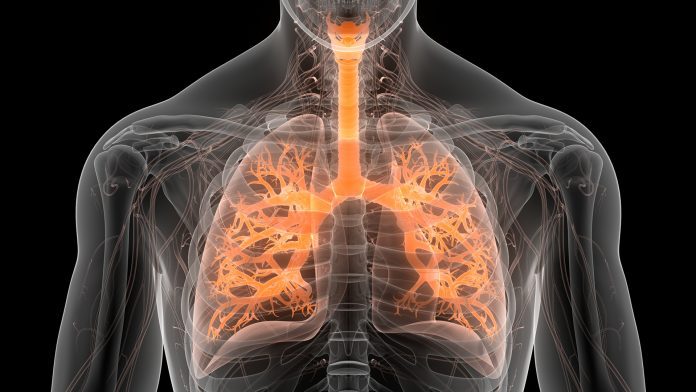
UCL researchers have co-developed new X-ray technology that identified a link between long COVID damage and pulmonary fibrosis.
A high-energy X-ray technique named Hierarchical Phase-Contrast Tomography (HiP-CT) scans whole organs down to the cellular level. It allows clinicians to view blood vessels about a tenth of the diameter of a human hair. This technology was employed to view microscopic lung clothes and changes in blood vessels only witnessed in pulmonary fibrosis patients associated with COVID.
Data shows that around 20% of patients who survive severe COVID (requiring hospitalisation) end up developing pulmonary fibrosis. Typically, life expectancy is around three to five years after diagnosis.
The paper was published in eBioMedicine.
Examining lungs of COVID and pulmonary fibrosis patients
The team of experts examined the intact lungs of patients who had passed away after contracting COVID. They used HiP-CT, a particle accelerator that provides the world’s brightest X-ray source, at around 100 billion times brighter than a hospital X-ray, developed by UCL with scientists from the European Synchrotron Research Facility (ESRF).
The team, from RWTH Aachen University Hospital, Hannover Medical School, HELIOS University Hospital in Wuppertal and the University Medical Centre Mainz, all in Germany, together with UCL and the ESRF, discovered a distinctive mosaic-like pattern of damage in the lungs that has not been seen before. They also compared blood samples from COVID patients with those with lung diseases including pulmonary fibrosis unrelated to COVID.
Microscopic clots drive inflammation in the lungs
The team found that the microscopic cloths, seen within tiny blood vessels, cause the distinctive pattern and drive inflammation in the lungs that can lead to long COVID symptoms and diseases like pulmonary fibrosis.
They hope that identifying the tiny clots found in damaged lung tissue and the changes in microscopic blood vessels can serve as an early indicator of COVID-induced pulmonary fibrosis. There is no cure; however, this discovery allows clinicians to administer treatment to potentially reduce the impact and improve patients’ quality of life.
Co-author Dr Claire Walsh (UCL Mechanical Engineering), who co-developed HiP-CT with ESRF, said: “A technique like HiP-CT is a real game-changer for unveiling not only the really fine detail of the tissue damage but also how it is distributed across a whole organ and relating that back to what is seen in clinic. This technology allows us to understand more about the impact that severe COVID-19 can have on the lungs and will help us when diagnosing and treating pulmonary fibrosis resulting from the virus.”
The authors concluded that treatments such as giving oxygen at an earlier stage of severe COVID might be beneficial for patients with severe pulmonary fibrosis in reducing scarring in the lungs.










